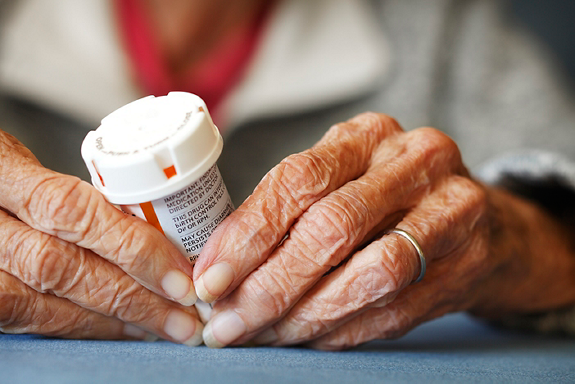Problem
The high cost of cancer drugs is a burden for many Medicare beneficiaries.
In August 2022, President Biden signed the Inflation Reduction Act (IRA). The IRA includes reforms to Medicare drug pricing, including drug price negotiation, inflationary rebates, and a Part D redesign. A piece of the Part D redesign includes a $2,000 annual out-of-pocket cap on beneficiary drug spending beginning in 2025.
Cancer care, including high-priced prescription cancer drugs, is often burdensome or entirely cost-prohibitive for patients in the U.S. Historically, there has never been a limit on out-of-pocket spending on prescription drugs for people enrolled in Medicare Part D, which left many beneficiaries struggling to cover costs of expensive, but necessary, cancer drugs.
Patients for Affordable Drugs wanted to quantify just how much a beneficiary may save with the new out-of-pocket cap.
Solution
NORC conducted a health care claims analysis to estimate potential savings for beneficiaries.
NORC analyzed 2021 Prescription Drug Event claims files, which include data from 100 percent of Medicare beneficiaries with Part D coverage. We excluded people who receive low-income subsidies, since these beneficiaries face no or limited cost-sharing for their prescriptions. We also excluded those enrolled in employer group plans and anyone not continuously enrolled in the calendar year. This group consists of traditional enrollees, and not the more than 50 percent of beneficiaries who are in Medicare Advantage plans, many of whom will also save.
We first used the claims data to estimate the number of beneficiaries taking cancer drugs at any point in the year. To estimate the impact of the IRA out-of-pocket maximum, we trended forward the average total gross drug costs of beneficiaries taking cancer drugs from 2021 to 2025. We then applied the projected 2025 Part D standard benefit design, without the IRA changes, to the trended average total drug costs.
Result
Beneficiaries taking cancer drugs are likely to experience substantial savings.
Our analysis estimates that 61,378 beneficiaries with stand-alone Part D coverage in traditional fee-for-service Medicare who take anti-neoplastic drugs will experience savings with the new out-of-pocket cap. We estimate that this population would pay, on average, $9,590 out-of-pocket without the change to the out-of-pocket cap. With the new $2,00 cap, these beneficiaries will experience average projected savings of $7,590. Some beneficiaries will save up to $19,296, depending on their level of Part D drug spending. More broadly, when the out-of-pocket cap goes into effect in 2025, Medicare Part D beneficiaries will experience significant savings in total out-of-pocket prescription drug costs.







